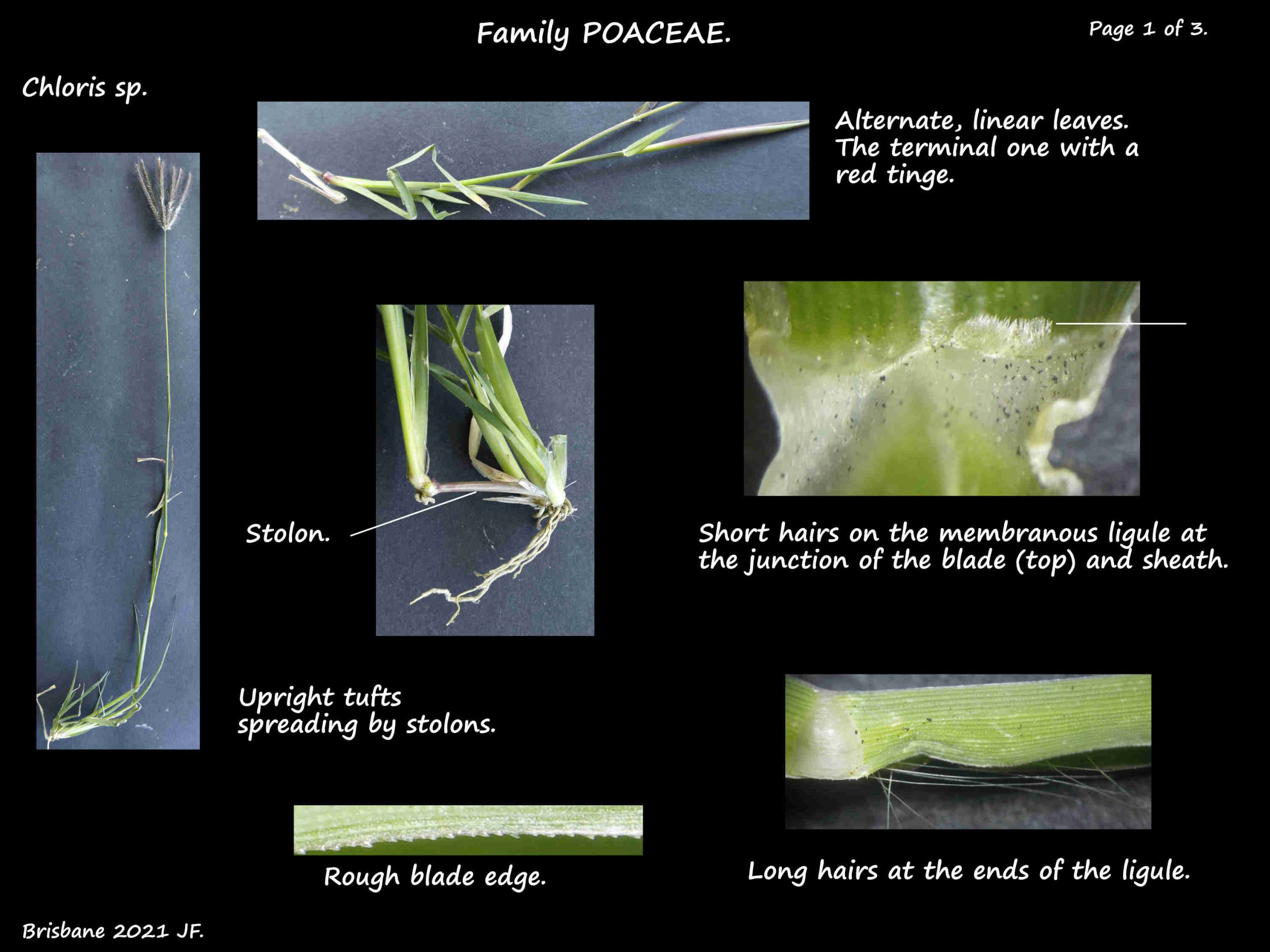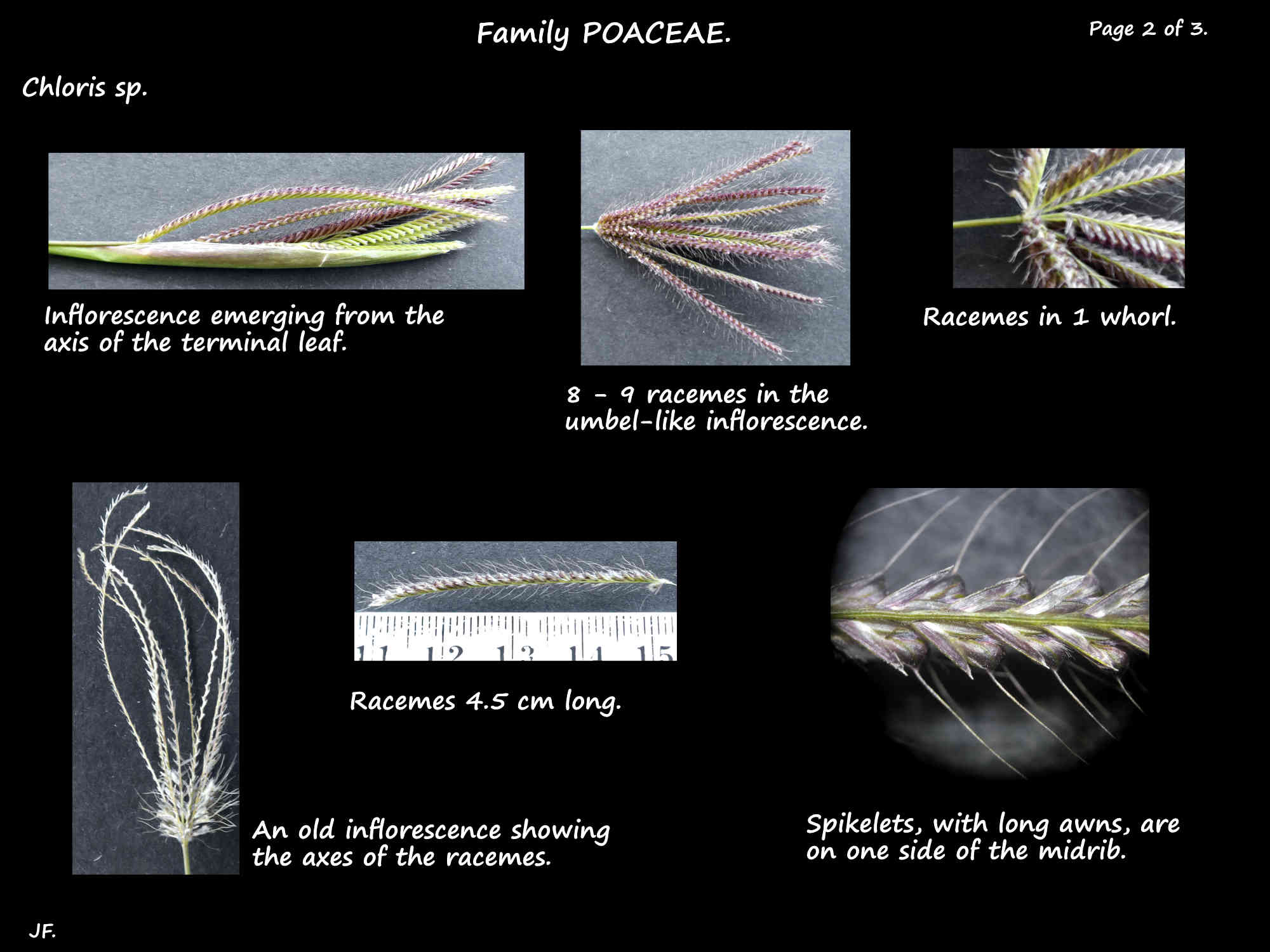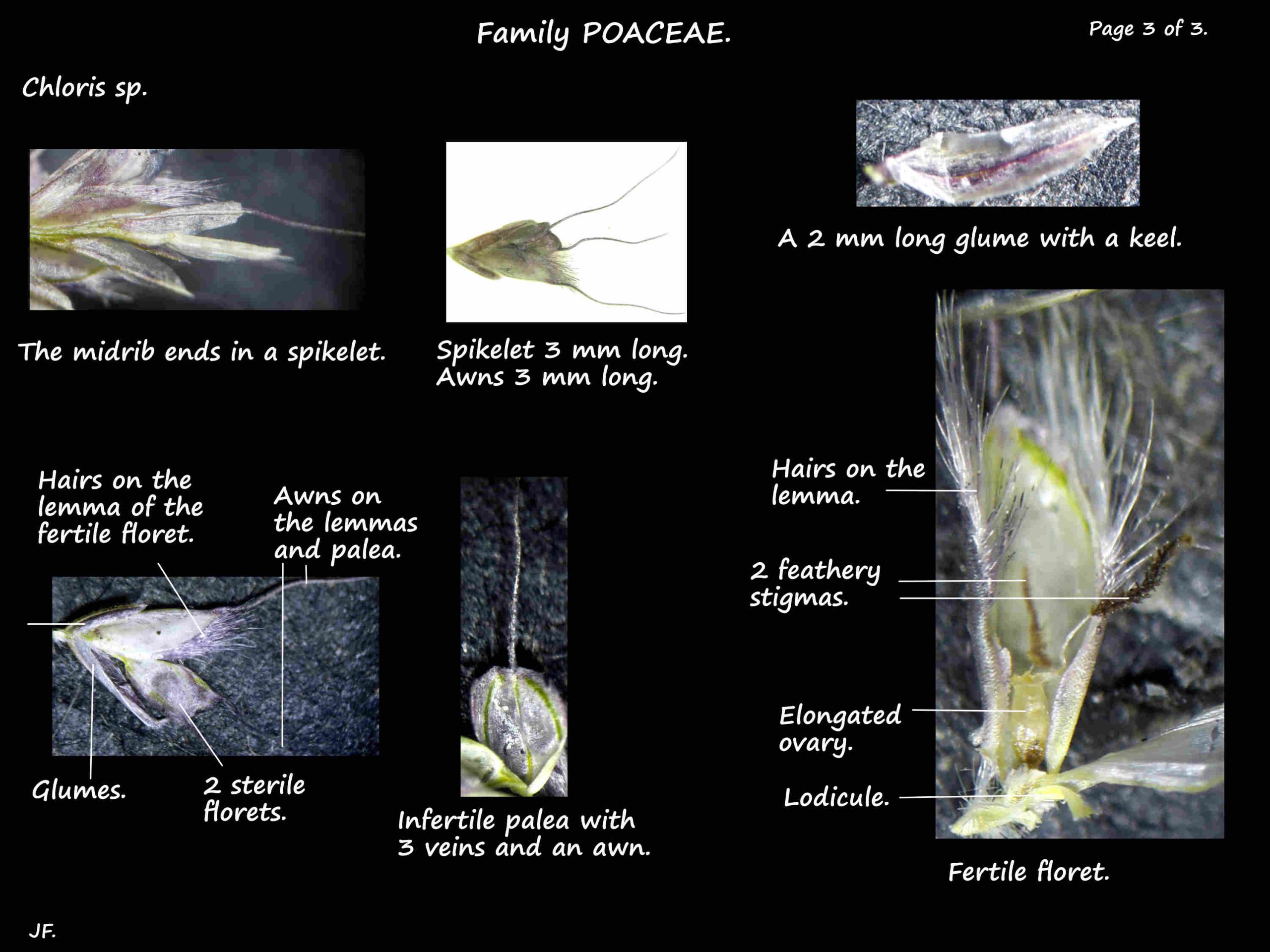Chloris.
Family Poaceae > Subfamily Chloridoideae > Tribe Cynodonteae > Subtribe Eleusininae.
There are 40 to 50 species commonly known as Windmill or Finger grass.
Australia has around 12 species of which half are native and half naturalised.
Plants can grow in upright tufts or low and creeping along the ground.
They may have rhizomes and stolons.
The leaves have a narrow blade and an open sheath that runs down the stem.
The blade may have some hairs at the base.
The ligule, at the base of the blade, is a narrow membrane fringed with hairs or just hairs.
Inflorescences are umbel-like or digitate with (1) 2 to 15 branches (racemes) coming off the top of the stem.
Each raceme has 2 rows of spikelets down one side of the central axis or rachis.
The solitary spikelets, on a short or no stalk, each have 2 basal bracts and more than 2 florets.
The bracts or glumes are of unequal length and have a keel with short hairs.
The pointed tip may be extended slightly as a mucro.
Each spikelet can have up to 7 florets but only the bottom 1 (2) is fertile.
The lemmas can be membranous or firm like the glumes.
They may have some hairs on the edges and they have an awn.
The shorter palea also has an awn.
Fertile florets have 3 stamens and an ovary with 2 stigmas.
Sterile florets may have rudimentary stamens &/or an ovary or are just a bract.
J.F.




